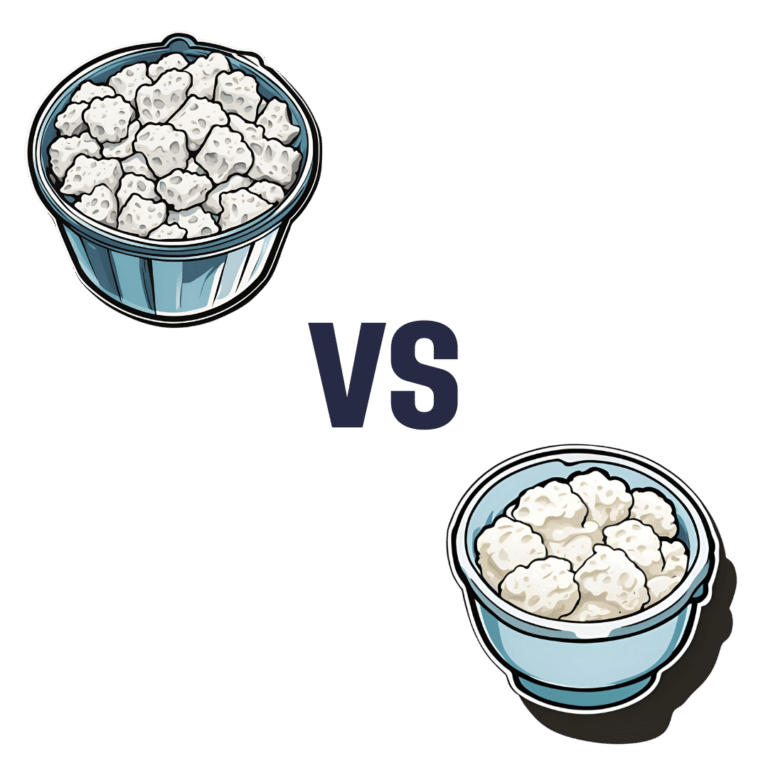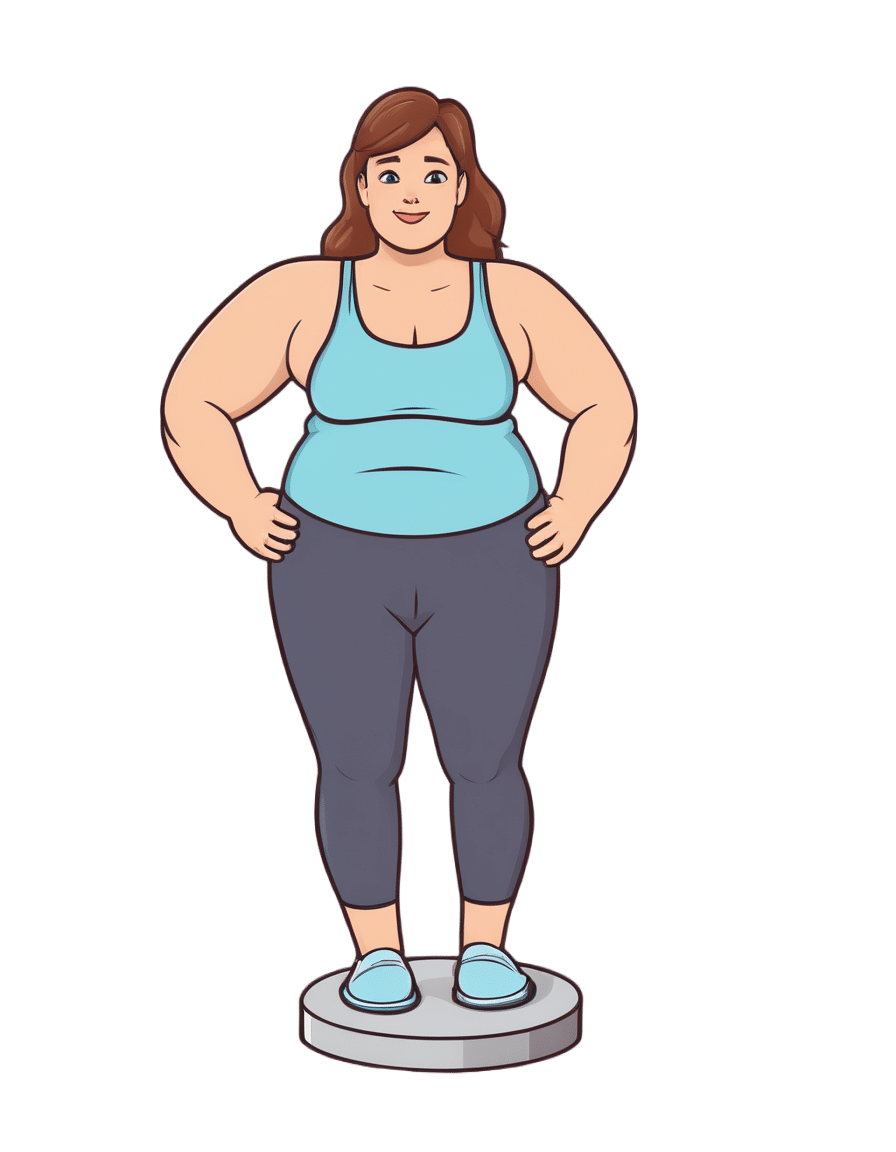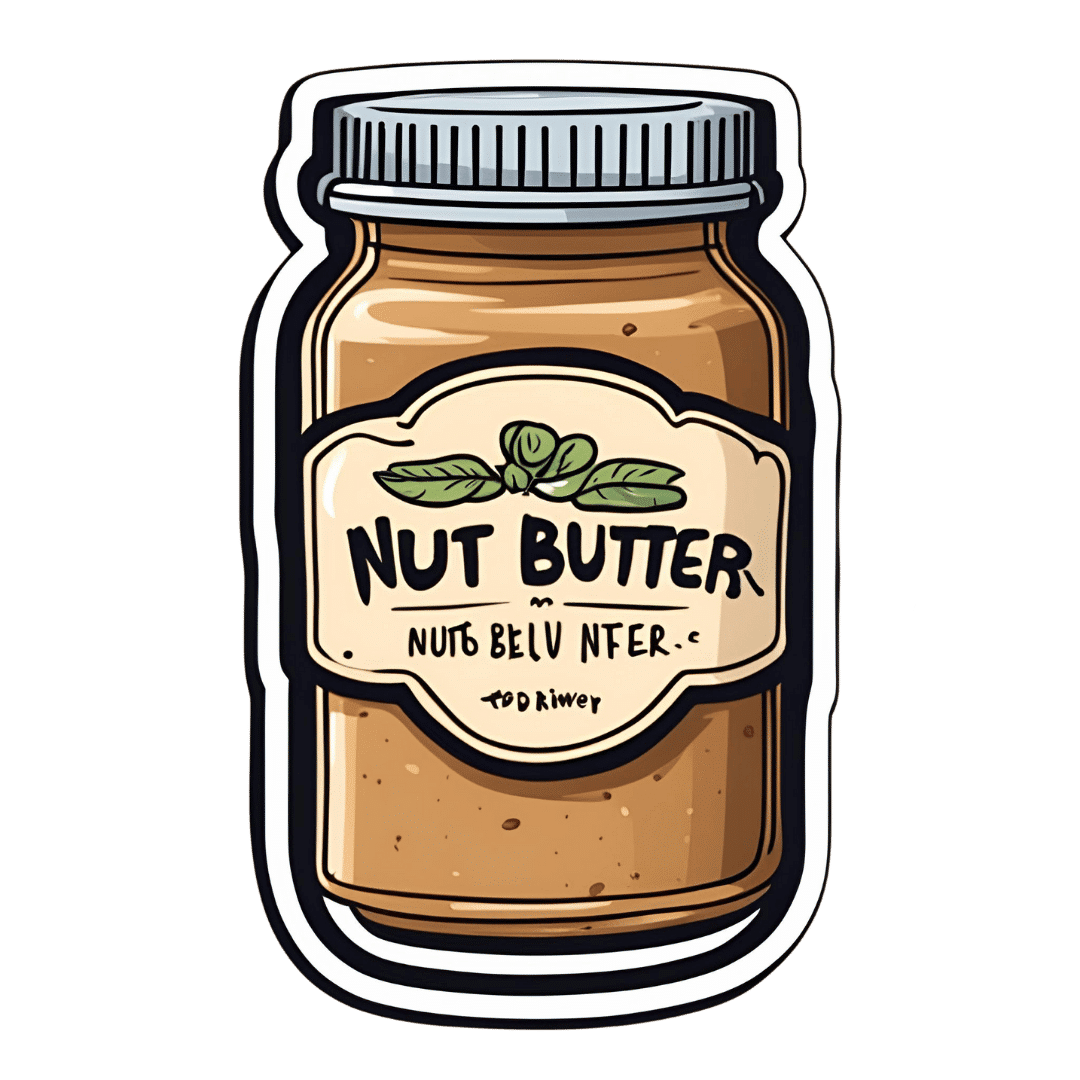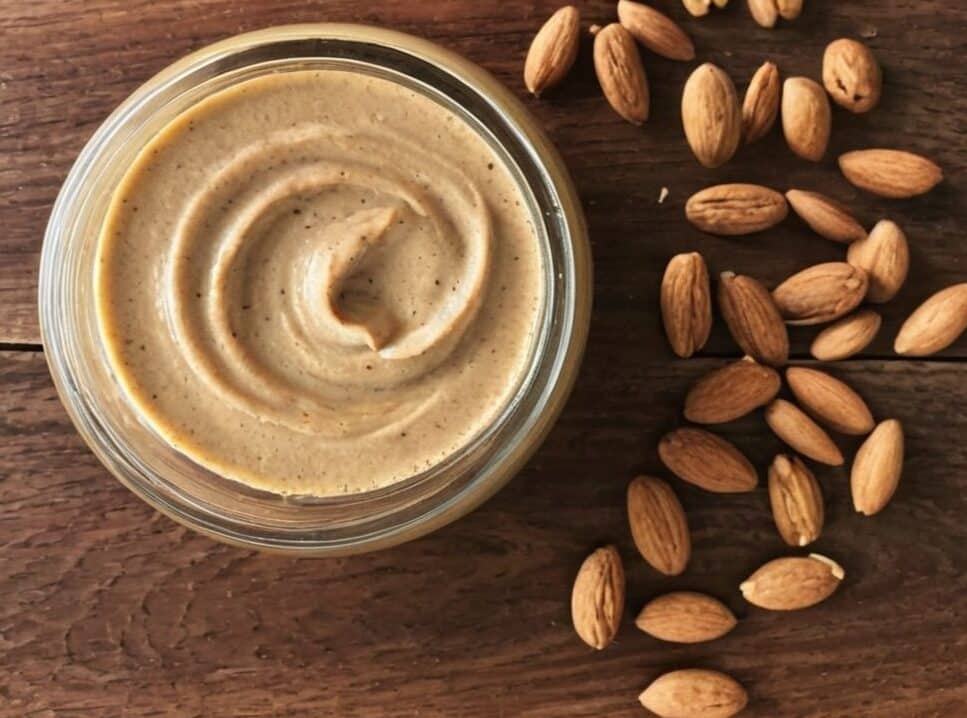
Carrots vs Parsnips – Which is Healthier?
10almonds is reader-supported. We may, at no cost to you, receive a portion of sales if you purchase a product through a link in this article.
Our Verdict
When comparing carrots to parsnips, we picked the parsnips.
Why?
There are arguments for both! But we say parsnips win on overall nutritional density.
In terms of macros, parsnips vary quite a lot from region to another, but broadly speaking, parsnips have more carbs and fiber, and/but the ratios are such that carrots have the lower glycemic index. We’ll call this one a win for carrots.
When it comes to vitamins, carrots have more of vitamins A, B2, B3, B6, and choline, while parsnips have more of vitamins B1, B5, B9, C, E, and K. A small win for parsnips here.
In the category of minerals, carrots are not higher in any minerals, while parsnips are higher in calcium, copper, iron, magnesium, manganese, phosphorus, potassium, selenium, and zinc. An overwhelming win for parsnips.
While the overall vitamin and mineral content puts parsnips ahead, it’s still worth noting that carrots have highly bioavailable megadoses of vitamin A.
Another thing to note is that the glycemic index recorded for both is when peeled and boiled, whereas both of these root vegetables can be enjoyed raw if you wish, which has a much lower GI.
In short, enjoy either or both, but parsnips are the more nutritionally dense overall.
Want to learn more?
You might like to read:
Glycemic Index vs Glycemic Load vs Insulin Index
Take care!
Don’t Forget…
Did you arrive here from our newsletter? Don’t forget to return to the email to continue learning!
Recommended
Learn to Age Gracefully
Join the 98k+ American women taking control of their health & aging with our 100% free (and fun!) daily emails:
-
Sea Salt vs MSG – Which is Healthier?
10almonds is reader-supported. We may, at no cost to you, receive a portion of sales if you purchase a product through a link in this article.
Our Verdict
When comparing sea salt to MSG, we picked the MSG.
Why?
Surprise! Or maybe not? The results of the poll for this one should be interesting, and will help us know whether we need to keep mentioning in every second recipe that MSG is a healthier alternative to salt.
First of all, two things:
- Don’t be fooled by their respective names, and/or with such, an appeal to naturalism. For example, hydroxybenzoic acids are a major group of beneficial phenolic compounds, whereas hemlock is a wildflower that grows in this writer’s garden and will kill you if you eat it. Actually hydroxybenzoic acids also grow here (on the apple tree), but that’s not the point. The point is: worry less about names, and more about evidence!
- Don’t be fooled by the packaging. A lot of products go for “greenwashing” of one kind or another. You’re not eating the packaging (hopefully), so don’t be swayed by a graphic designer’s implementation of a marketing team’s aesthetic choices.
If naturalism is for some reason very important to you though, do bear in mind that glutamates occur generously in many common foodstuffs (tomatoes are a fine, healthy example) and eating tomato in the presence of salt will have the same biochemical effect as eating MSG, because it’s the same chemicals.
Since there are bad rumors about MSG’s safety, especially in the US where there is often a strong distrust of anything associated with China (actually MSG was first isolated in Japan, more than 100 years ago, by Japanese biochemist Dr. Kikunae Ikeda, but that gets drowned out by the “Chinese Restaurant Syndrome” fear in the US), know that this has resulted in MSG being one of the most-studied food additives in the last 40 years or so, with many teams of scientists trying to determine its risks and not finding any (aside from the same that could be said of any substance; anything in sufficient excess will kill you, including water or oxygen).
Well, that’s all been about safety, but what makes it healthier than sea salt?
Simply, it has about ⅓ of the sodium content, that’s all. So, if you are laboring all day in a field under the hot summer sun, then probably the sea salt will be healthier, to replenish more of the sodium you lost through sweat. But for most people most of the time, having less sodium rather than more is the healthier option.
Want to learn more?
You might like to read:
- Monosodium Glutamate: Sinless Flavor-Enhancer Or Terrible Health Risk?
- MSG vs. Salt: Sodium Comparison ← here be chemistry
- More Salt, Not Less? ← No
- Pink Himalayan Salt: Health Facts
Take care!
Share This Post
-
No, taking drugs like Ozempic isn’t ‘cheating’ at weight loss or the ‘easy way out’
10almonds is reader-supported. We may, at no cost to you, receive a portion of sales if you purchase a product through a link in this article.
Hundreds of thousands of people worldwide are taking drugs like Ozempic to lose weight. But what do we actually know about them? This month, The Conversation’s experts explore their rise, impact and potential consequences.
Obesity medication that is effective has been a long time coming. Enter semaglutide (sold as Ozempic and Wegovy), which is helping people improve weight-related health, including lowering the risk of a having a heart attack or stroke, while also silencing “food noise”.
As demand for semaglutide increases, so are claims that taking it is “cheating” at weight loss or the “easy way out”.
We don’t tell people who need statin medication to treat high cholesterol or drugs to manage high blood pressure they’re cheating or taking the easy way out.
Nor should we shame people taking semaglutide. It’s a drug used to treat diabetes and obesity which needs to be taken long term and comes with risks and side effects, as well as benefits. When prescribed for obesity, it’s given alongside advice about diet and exercise.
How does it work?
Semaglutide is a glucagon-like peptide-1 receptor agonist (GLP-1RA). This means it makes your body’s own glucagon-like peptide-1 hormone, called GLP-1 for short, work better.
GLP-1 gets secreted by cells in your gut when it detects increased nutrient levels after eating. This stimulates insulin production, which lowers blood sugars.
GLP-1 also slows gastric emptying, which makes you feel full, and reduces hunger and feelings of reward after eating.
GLP-1 receptor agonist (GLP-1RA) medications like Ozempic help the body’s own GLP-1 work better by mimicking and extending its action.
Some studies have found less GLP-1 gets released after meals in adults with obesity or type 2 diabetes mellitus compared to adults with normal glucose tolerance. So having less GLP-1 circulating in your blood means you don’t feel as full after eating and get hungry again sooner compared to people who produce more.
GLP-1 has a very short half-life of about two minutes. So GLP-1RA medications were designed to have a very long half-life of about seven days. That’s why semaglutide is given as a weekly injection.
What can users expect? What does the research say?
Higher doses of semaglutide are prescribed to treat obesity compared to type 2 diabetes management (up to 2.4mg versus 2.0mg weekly).
A large group of randomised controlled trials, called STEP trials, all tested weekly 2.4mg semaglutide injections versus different interventions or placebo drugs.
Trials lasting 1.3–2 years consistently found weekly 2.4 mg semaglutide injections led to 6–12% greater weight loss compared to placebo or alternative interventions. The average weight change depended on how long medication treatment lasted and length of follow-up.
Higher doses of semaglutide are prescribed for obesity than for type 2 diabetes. fcm82/Shutterstock Weight reduction due to semaglutide also leads to a reduction in systolic and diastolic blood pressure of about 4.8 mmHg and 2.5 mmHg respectively, a reduction in triglyceride levels (a type of blood fat) and improved physical function.
Another recent trial in adults with pre-existing heart disease and obesity, but without type 2 diabetes, found adults receiving weekly 2.4mg semaglutide injections had a 20% lower risk of specific cardiovascular events, including having a non-fatal heart attack, a stroke or dying from cardiovascular disease, after three years follow-up.
Who is eligible for semaglutide?
Australia’s regulator, the Therapeutic Goods Administration (TGA), has approved semaglutide, sold as Ozempic, for treating type 2 diabetes.
However, due to shortages, the TGA had advised doctors not to start new Ozempic prescriptions for “off-label use” such as obesity treatment and the Pharmaceutical Benefits Scheme doesn’t currently subsidise off-label use.
The TGA has approved Wegovy to treat obesity but it’s not currently available in Australia.
When it’s available, doctors will be able to prescribe semaglutide to treat obesity in conjunction with lifestyle interventions (including diet, physical activity and psychological support) in adults with obesity (a BMI of 30 or above) or those with a BMI of 27 or above who also have weight-related medical complications.
What else do you need to do during Ozempic treatment?
Checking details of the STEP trial intervention components, it’s clear participants invested a lot of time and effort. In addition to taking medication, people had brief lifestyle counselling sessions with dietitians or other health professionals every four weeks as a minimum in most trials.
Support sessions were designed to help people stick with consuming 2,000 kilojoules (500 calories) less daily compared to their energy needs, and performing 150 minutes of moderate-to-vigorous physical activity, like brisk walking, dancing and gardening each week.
STEP trials varied in other components, with follow-up time periods varying from 68 to 104 weeks. The aim of these trials was to show the effect of adding the medication on top of other lifestyle counselling.
Trial participants also exercised for 150 minutes a week. Elena Nichizhenova/Shutterstock A review of obesity medication trials found people reported they needed less cognitive behaviour training to help them stick with the reduced energy intake. This is one aspect where drug treatment may make adherence a little easier. Not feeling as hungry and having environmental food cues “switched off” may mean less support is required for goal-setting, self-monitoring food intake and avoiding things that trigger eating.
But what are the side effects?
Semaglutide’s side-effects include nausea, diarrhoea, vomiting, constipation, indigestion and abdominal pain.
In one study these led to discontinuation of medication in 6% of people, but interestingly also in 3% of people taking placebos.
More severe side-effects included gallbladder disease, acute pancreatitis, hypoglycaemia, acute kidney disease and injection site reactions.
To reduce risk or severity of side-effects, medication doses are increased very slowly over months. Once the full dose and response are achieved, research indicates you need to take it long term.
Given this long-term commitment, and associated high out-of-pocket cost of medication, when it comes to taking semaglutide to treat obesity, there is no way it can be considered “cheating”.
Read the other articles in The Conversation’s Ozempic series here.
Clare Collins, Laureate Professor in Nutrition and Dietetics, University of Newcastle
This article is republished from The Conversation under a Creative Commons license. Read the original article.
Share This Post
-
The Best Menopause Advice You Don’t Want To Hear About
10almonds is reader-supported. We may, at no cost to you, receive a portion of sales if you purchase a product through a link in this article.
Nutritionist and perimenopause coach Claudia Canu, whom we’ve featured before in our Expert Insights segment, has advice:
Here’s to good health
When it comes to alcohol, the advice is: don’t.
Or at least, cut back, and manage the effects by ensuring good hydration, having an “alcohol curfew” and so forth.
What’s the relation to menopause? Well, alcohol’s not good for anyone at any time of life, but there are some special considerations when it comes to alcohol and estrogenic hormonal health:
- The liver works hard to process the alcohol as a matter of urgency, delaying estrogen processing, which can increase the risk of breast and uterine cancer.
- Alcohol has no positive health effects and is also linked to higher risks of breast and colorectal cancer.
- Alcohol can also trigger some menopausal symptoms, such as night sweats and hot flashes. So, maybe reaching for that “cooling drink” isn’t the remedy it might seem.
- During menopause, the body becomes more insulin-resistant, making it more susceptible to blood sugar spikes caused by alcohol. Also not good.
Common reasons women turn to alcohol include stress, frustration, the need for reward, and social pressure, and all of these can be heightened when undergoing hormonal changes. Yet, alcohol will ultimately only worsen each of those things.
For more on the science of some of the above, plus tips on how to make positive changes with minimum discomfort, enjoy:
Click Here If The Embedded Video Doesn’t Load Automatically!
Want to learn more?
You might also like to read:
- How To Reduce Or Quit Alcohol
- How To Reduce The Harm Of Drinking (Without Abstaining)
- Where Nutrition Meets Habits! ← our “Expert Insights” spotlight on Canu
- How To Reduce Your Alzheimer’s Risk Early ← particularly important at this life stage
Take care!
Share This Post
Related Posts
-
Rice vs Buckwheat – Which is Healthier?
10almonds is reader-supported. We may, at no cost to you, receive a portion of sales if you purchase a product through a link in this article.
Our Verdict
When comparing rice to buckwheat, we picked the buckwheat.
Why?
It’s a simple one today:
- The vitamin and mineral profiles are very similar, so neither of these are a swaying factor
- In terms of macros, rice is higher in carbohydrates while buckwheat is higher in fiber
- Buckwheat also has more protein, but not by much
- Buckwheat has the lower glycemic index, and a lower insulin index, too
While buckwheat cannot always be reasonably used as a substitute for rice (often because the texture would not work the same), in many cases it can be.
And if you love rice, well, so do we, but variety is also the spice of life indeed, not to mention important for good health. You know that whole “eat 30 different plants per week” thing? Grains count in that tally! So substituting buckwheat in place of rice sometimes seems like a very good bet.
Not sure where to buy it?
Here for your convenience is an example product on Amazon
Want to know more about today’s topic?
Check out: Carb-Strong or Carb-Wrong?
Enjoy!
Don’t Forget…
Did you arrive here from our newsletter? Don’t forget to return to the email to continue learning!
Learn to Age Gracefully
Join the 98k+ American women taking control of their health & aging with our 100% free (and fun!) daily emails:
-
Healthiest-Three-Nut Butter
10almonds is reader-supported. We may, at no cost to you, receive a portion of sales if you purchase a product through a link in this article.
We’re often telling you to “diversify your nuts”, so here’s a great way to get in three at once with no added sugar, palm oil, or preservatives, and only the salt you choose to put in. We’ve picked three of the healthiest nuts around, but if you happen to be allergic, don’t worry, we’ve got you covered too.
You will need
- 1 cup almonds (if allergic, substitute a seed, e.g. chia, and make it ½ cup)
- 1 cup walnuts (if allergic, substitute a seed, e.g. pumpkin, and make it ½ cup)
- 1 cup pistachios (if allergic, substitute a seed, e.g. poppy, and make it ½ cup)
- 1 tbsp almond oil (if allergic, substitute extra virgin olive oil) (if you prefer sweet nut butter, substitute 1 tbsp maple syrup; the role here is to emulsify the nuts, and this will do the same job)
- Optional: ¼ tsp MSG or ½ tsp low-sodium salt
Method
(we suggest you read everything at least once before doing anything)
1a) If using nuts, heat your oven to 350℉ / 180℃. Place the nuts on a baking tray lined with baking paper, and bake/roast for about 10 minutes, but keep an eye on it to ensure the nuts don’t burn, and jiggle them if necessary to ensure they toast evenly. Once done, allow to cool.
1b) If using seeds, you can either omit that step, or do the same for 5 minutes if you want to, but really it’s not necessary.
2) Blend all ingredients (nuts/seeds, oil, MSG/salt) in a high-speed blender. Note: this will take about 10 minutes in total, and we recommend you do it in 30-second bursts so as to not overheat the motor. You also may need to periodically scrape the mixture down the side of the blender, to ensure a smooth consistency.
3) Transfer to a clean jar, and enjoy at your leisure:
Enjoy!
Want to learn more?
For those interested in some of the science of what we have going on today:
- Why You Should Diversify Your Nuts!
- Sesame Seeds vs Poppy Seeds – Which is Healthier?
- If You’re Not Taking Chia, You’re Missing Out
- Sea Salt vs MSG – Which is Healthier?
Take care!
Don’t Forget…
Did you arrive here from our newsletter? Don’t forget to return to the email to continue learning!
Learn to Age Gracefully
Join the 98k+ American women taking control of their health & aging with our 100% free (and fun!) daily emails:
-
Relationships: When To Stick It Out & When To Call It Quits
10almonds is reader-supported. We may, at no cost to you, receive a portion of sales if you purchase a product through a link in this article.
Like A Ship Loves An Anchor?
Today’s article may seem a little bit of a downer to start with, but don’t worry, it picks up again too. Simply put, we’ve written before about many of the good parts of relationships, e.g:
Only One Kind Of Relationship Promotes Longevity This Much!
…but what if that’s not what we have?
Note: if you have a very happy, secure, fulfilling, joyous relationship, then, great! Or if you’re single and happy, then, also great! Hopefully you will still find today’s feature of use if you find yourself advising a friend or family member one day. So without further ado, let’s get to it…
You may be familiar with the “sunk cost fallacy”; if not: it’s what happens when a person or group has already invested into a given thing, such that even though the thing is not going at all the way they hoped, they now want to continue trying to make that thing work, lest their previous investment be lost. But the truth is: if it’s not going to work, then the initial investment is already lost, and pouring out extra won’t help—it’ll just lose more.
That “investment” in a given thing could be money, time, energy, or (often the case) a combination of the above.
In the field of romance, the “sunk cost fallacy” keeps a lot of bad relationships going for longer than perhaps they should, and looking back (perhaps after a short adjustment period), the newly-single person says “why did I let that go on?” and vows to not make the same mistake again.
But that prompts the question: how can we know when it’s right to “keep working on it, because relationships do involve work”, as perfectly reasonable relationship advice often goes, and when it’s right to call it quits?
Should I stay or should I go?
Some questions for you (or perhaps a friend you might find yourself advising) to consider:
- What qualities do you consider the most important for a partner to have—and does your partner have them?
- If you described the worst of your relationship to a close friend, would that friend feel bad for you?
- Do you miss your partner when they’re away, or are you glad of the break? When they return, are they still glad to see you?
- If you weren’t already in this relationship, would you seek to enter it now? (This takes away sunk cost and allows a more neutral assessment)
- Do you feel completely safe with your partner (emotionally as well as physically), or must you tread carefully to avoid conflict?
- If your partner decided tomorrow that they didn’t want to be with you anymore and left, would that be just a heartbreak, or an exciting beginning of a new chapter in your life?
- What things would you generally consider dealbreakers in a relationship—and has your partner done any of them?
The last one can be surprising, by the way. We often see or hear of other people’s adverse relationship situations and think “I would never allow…” yet when we are in a relationship and in love, there’s a good chance that we might indeed allow—or rather, excuse, overlook, and forgive.
And, patience and forgiveness certainly aren’t inherently bad traits to have—it’s just good to deploy them consciously, and not merely be a doormat.
Either way, reflect (or advise your friend/family member to reflect, as applicable) on the “score” from the above questions.
- If the score is good, then maybe it really is just a rough patch, and the tools we link at the top and bottom of this article might help.
- If the score is bad, the relationship is bad, and no amount of historic love or miles clocked up together will change that. Sometimes it’s not even anyone’s fault; sometimes a relationship just ran its course, and now it’s time to accept that and turn to a new chapter.
“At my age…”
As we get older, it’s easy for that sunk cost fallacy to loom large. Inertia is heavy, the mutual entanglement of lives is far-reaching, and we might not feel we have the same energy for dating that we did when we were younger.
And there may sometimes be a statistical argument for “sticking it out” at least for a while, depending on where we are in the relationship, per this study (with 165,039 participants aged 20–76), which found:
❝Results on mean levels indicated that relationship satisfaction decreased from age 20 to 40, reached a low point at age 40, then increased until age 65, and plateaued in late adulthood.
As regards the metric of relationship duration, relationship satisfaction decreased during the first 10 years of the relationship, reached a low point at 10 years, increased until 20 years, and then decreased again.❞
Source: Development of Relationship Satisfaction Across the Life Span: A Systematic Review and Meta-Analysis
And yet, when it comes to prospects for a new relationship…
- If our remaining life is growing shorter, then it’s definitely too short to spend in an unhappy relationship
- Maybe we really won’t find romance again… And maybe that’s ok, if w’re comfortable making our peace with that and finding joy in the rest of life (this widowed writer (hi, it’s me) plans to remain single now by preference, and her life is very full of purpose and beauty and joy and yes, even love—for family, friends, etc, plus the memory of my wonderful late beloved)
- Nevertheless, the simple fact is: many people do find what they go on to describe as their best relationship yet, late in life ← this study is with a small sample size, but in this case, even anecdotal evidence seems sufficient to make the claim reasonable; probably you personally know someone who has done so. If they can, so can you, if you so wish.
- Adding on to that last point… Later life relationships can also offer numerous significant advantages unique to such (albeit some different challenges too—but with the right person, those challenges are just a fun thing to tackle together). See for example:
An exploratory investigation into dating among later‐life women
And about those later-life relationships that do work? They look like this:
this one looks like the title says it all, but it really doesn’t, and it’s very much worth at least reading the abstract, if not the entire paper—because it talks a lot about the characteristics that make for happy or unhappy relationships, and the effect that those things have on people. It really is very good, and quite an easy read.
See again: Healthy Relationship, Healthy Life
Take care!
Don’t Forget…
Did you arrive here from our newsletter? Don’t forget to return to the email to continue learning!
Learn to Age Gracefully
Join the 98k+ American women taking control of their health & aging with our 100% free (and fun!) daily emails:










